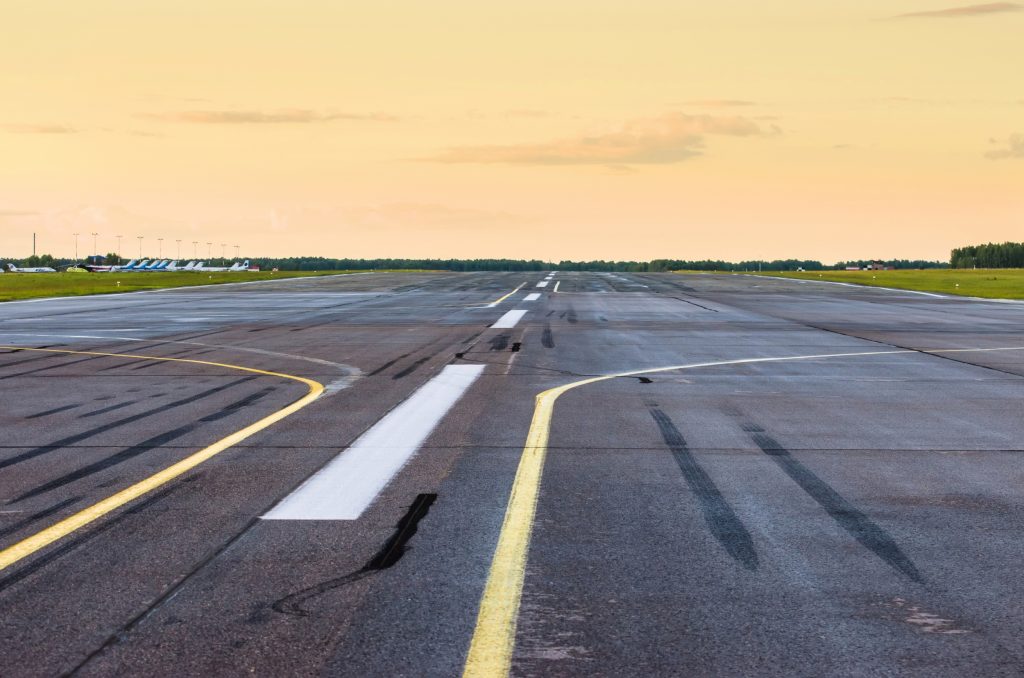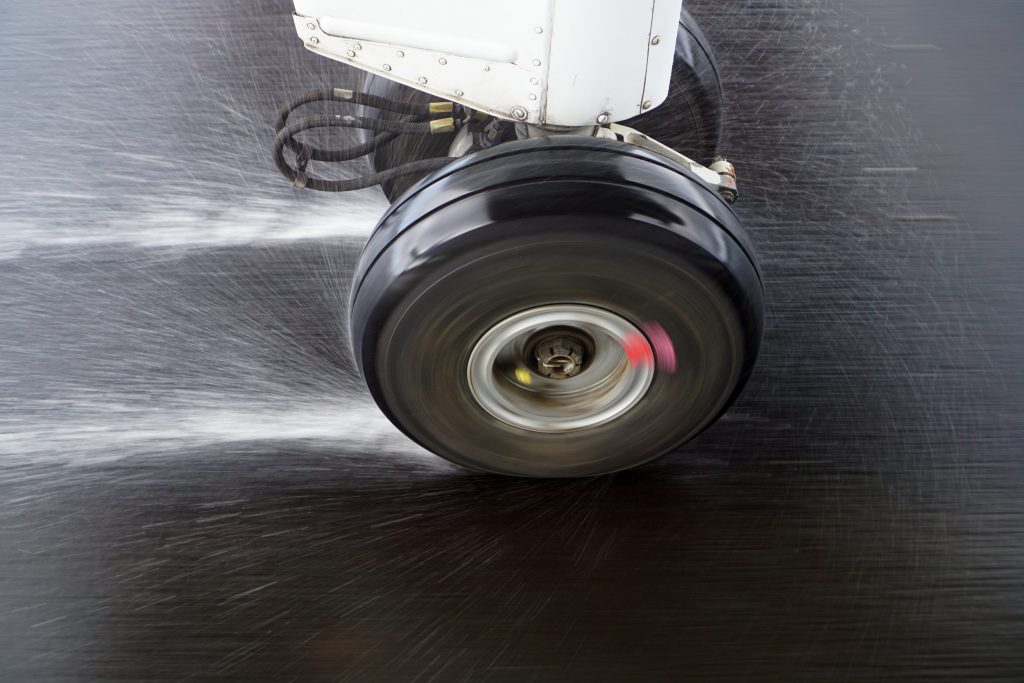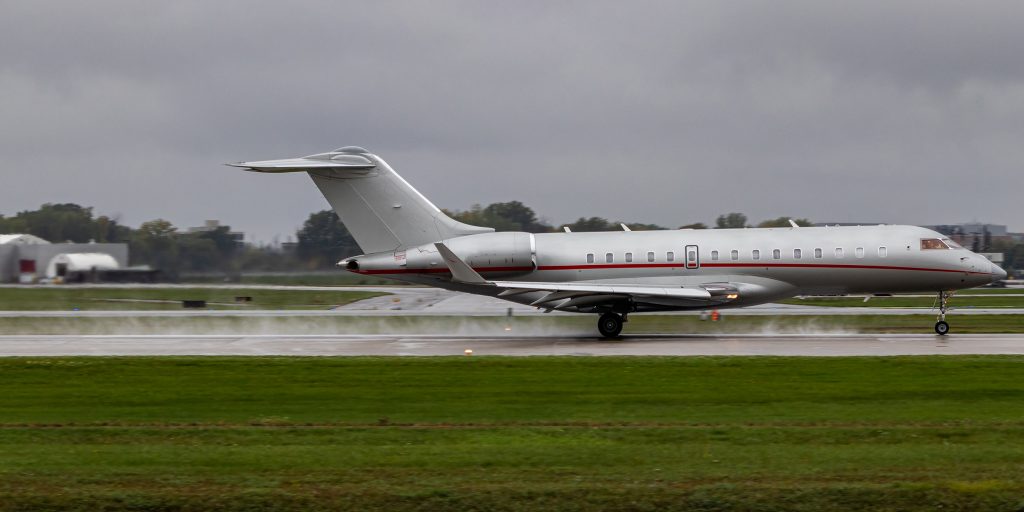Switch to:
 EN
EN  Português (PT)
Português (PT)  Español (ES)
Español (ES)
Perhaps the main factor of discomfort or insecurity when flying, whether for frequent travelers or not, is facing heavy rains and adverse weather conditions. Storms, lack of visibility, wet runways… this all tends to scare passengers. In both commercial and executive aviation, rain itself poses few problems for keeping the plane in the air, but precipitation is capable of generating other types of concern.
One of the most relevant relates to landing conditions. If the runway is wet, something common in the rainiest seasons – between November and March in Brazil – does landing become a dangerous procedure? In general terms, the answer is no. But to ensure that the process takes place safely, and without putting passengers and crew at risk, a series of checks, measurements, and protocols must be followed.
For example, it is the responsibility of airport inspectors on the apron and runway to monitor the water level in the landing strips. For this, specialists examine the area with equipment to carry out measurements. If they identify that the water depth accumulated on the pavement is greater than 3 mm, the runway is defined as “contaminated”, as it represents a high risk of the aircraft excursion, that is, the pilot losing control of the aircraft and leaving the limits of the runway.

According to the National Civil Aviation Agency (Anac), what should also be considered includes how contaminated the runway is with water, snow, or ice, among other possibilities, although a portion of less than 25% of the runway can be covering an area relevant to the operation, such as the area of rotation and departure from the ground or the segment of the runway where the airplane is at high speed on take-off where the drag effect is most relevant.
Therefore, when going out into the field, the aerodrome specialist looks for the areas that seem to be the most waterlogged and pays special attention to key relevant points, like the touchdown zone – where the aircraft will initially touch down, on the first stretch of the runway. The entire route, however, is rigorously checked.
The compiled and processed data is forwarded to the control tower, which will pass the information onto the flight crews, ensuring that every landing and take-off is carried out in complete safety. After all this work, if any pilot points out that the runway is slippery – even if there is no more than 3mm of accumulated water – a new monitoring session is carried out, including with the help of the airport’s engineering team.
The measurement is conducted, by determination of Anac, whenever there is, at least, moderate rain (with precipitation intensity equal to or greater than 5.1 mm/h) or when there is a report of a slippery track by the pilots. The classification goes from “Dry”, through “Damp” and “Wet”, to “Contaminated”, when the floor should not be used.
Why Can Wet Runways Be Dangerous?

Landing on a pavement that has more than 3mm of water on its surface presents the risk of aquaplaning (or hydroplaning). This is a phenomenon widely known to be relatively common in automobiles and occurs when this sheet of water interrupts the contact between tire and ground. As a result, the driver loses control of the steering and is unable to brake. For aviation, the logic is the same.
As mentioned, just a small swath of water can be enough to cause the pilot to lose control of the aircraft. Contrary to what one might imagine, it is not necessary for the tracks to be flooded for the danger to exist.
When it occurs, not even the anti-skid system (anti-lock) is able to solve the situation. As soon as the plane enters aquaplaning, the system senses the drop in speed on the affected wheels and releases pressure from the brakes, but the resumption of regular rotation of the wheels only occurs when they leave the area contaminated with water (or snow or ice).

There are also two other types of aquaplaning. The one we described above is called dynamic. Viscous, on the other hand, occurs when there is the presence of dust, remains of rubber or oil, increasing the viscosity of the track and making it difficult for the wheels to contact the surface. It usually occurs after a period of recent rain.
There is also aquaplaning by rubber reversal, also known as “vulcanization”. It happens when the brakes are locked on a damp or wet road. Thus, the friction between the tire and the surface generates heat, and the resulting steam causes the rubber to melt, partially separating it from the track.
How to Prevent the Wet Track from Becoming a Hazard
In addition to the aforementioned monitoring work, there are other actions that can increase safety levels when there is rain and wet roads. The pilot can, for example, approach the pavement at the slowest possible speed, with a firm touch so that direct contact between tires and track occurs. A “smooth” landing can be riskier, as the friction in the initial touchdown is lower – increasing the chance of hydroplaning – and increases the need for runway extension, for complete braking.
Retracting the flaps when the plane is fully on the ground can aid in a safe landing. This is because in this way the hydrodynamic lift will be reduced and the entire weight of the aircraft will be directed to the landing gear.

It is also recommended that the pilot immediately release the brakes when he realizes that he is in the process of aquaplaning – just like drivers do in cars. That way, the loss of control will be less. When the grip normalizes, then the brakes can be used again.
On the other hand, it is extremely important that pilots receive all information on weather conditions, visibility, and runway for takeoffs and landings. Saying, for example, that the track is “slippery and wet”, according to Anac, is vague information, as it does not detail exactly where the contamination is. With all the data available, the crew will be able to take the necessary precautions. No wonder the agency provides a manual for the procedure.
In addition, the Agency considers it important that aerodrome operators create databases with the history of water depth measurements: where they are, what the dimensions of puddles are, how deep, etc. This information can guide maintenance procedures for the roadway pavement, since frequent puddles can indicate defects or insufficient slope.
In general, lowering the risk of forming water slides involves better maintenance of the landing and take-off runway. That is, it is necessary to maintain it without unevenness, depressions, or deformations that alter its transversal and longitudinal slopes, in addition to maintaining a properly functioning drainage system.
Fly Safely with Flapper
In summary, we can say that if all procedures are followed to the letter, flying in the rain and taking off or landing on a wet runway is completely safe.
And the best way to ensure that all the service of your trip is carried out with a level of excellence is to look for Flapper. We only work with partners and crew extremely prepared to deal with any type of adversity and with a lot of experience in the field.
To get an instant quote for your next flight, visit our website or app. There, it is possible to customize embarkation and disembarkation locations, dates, times, and types of aircraft. If you need more information, please contact our team through the channel below.

